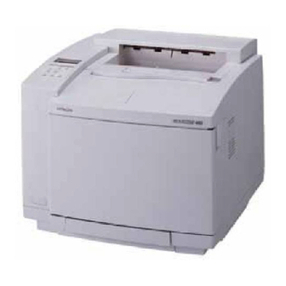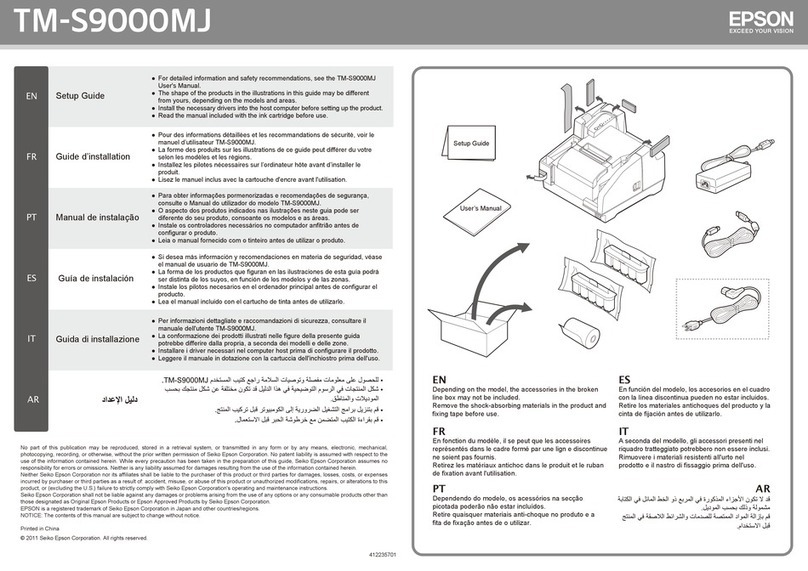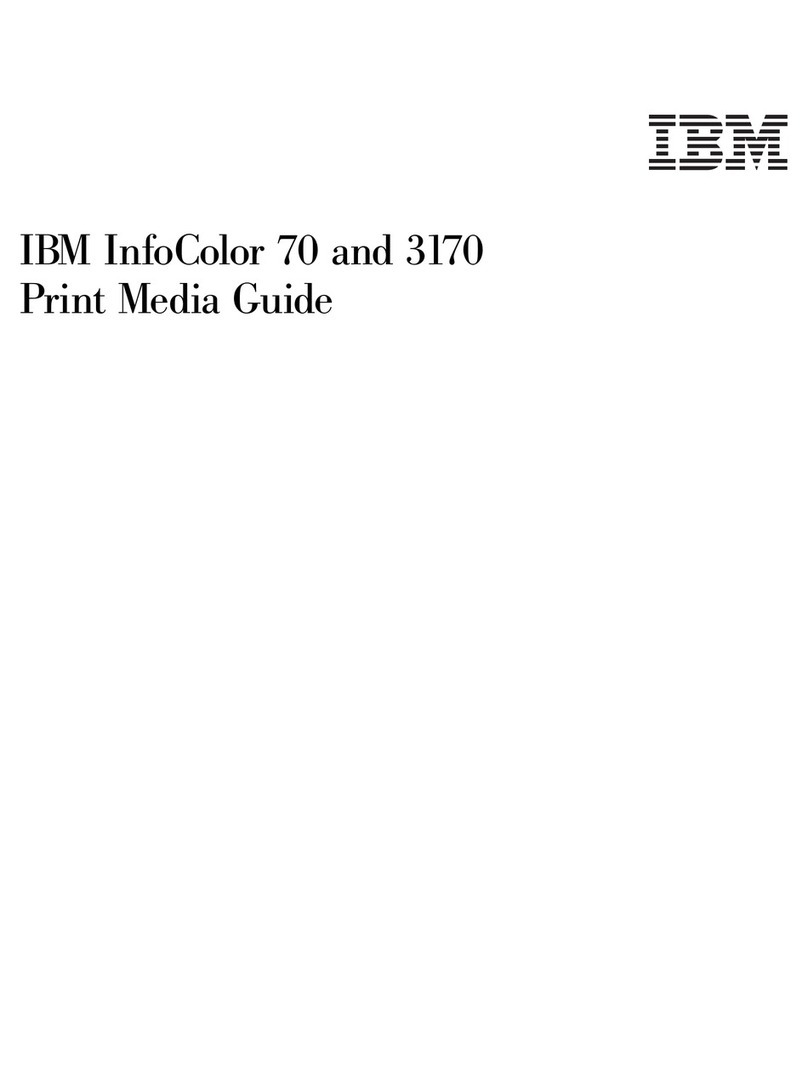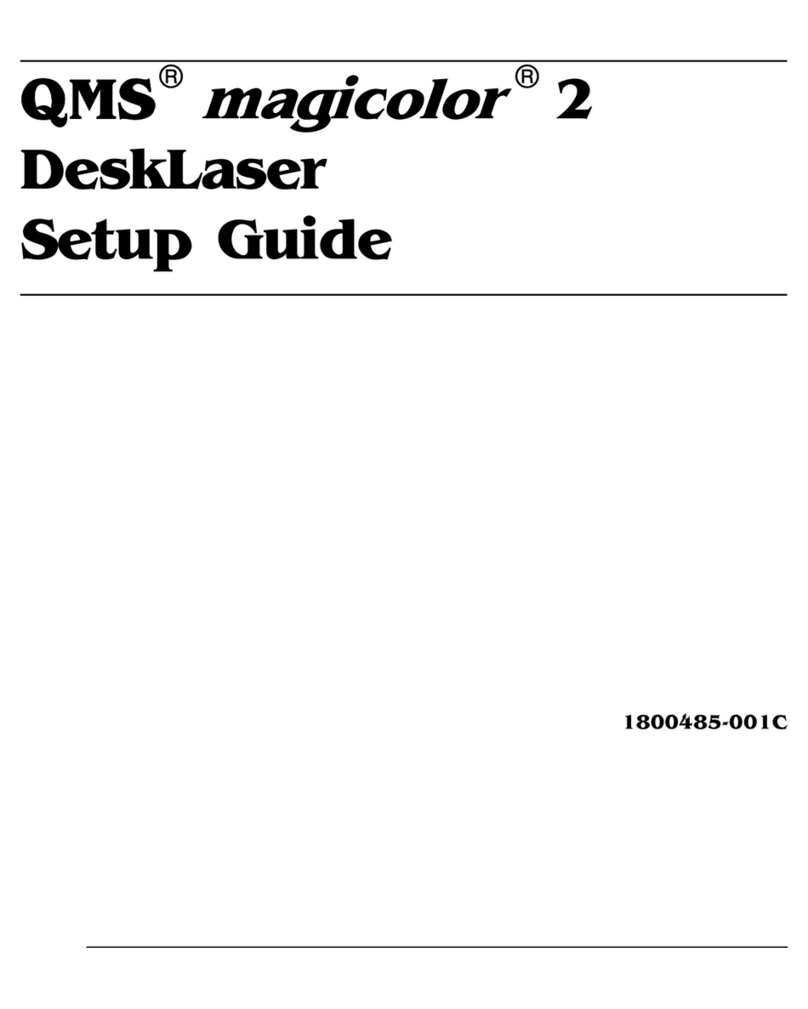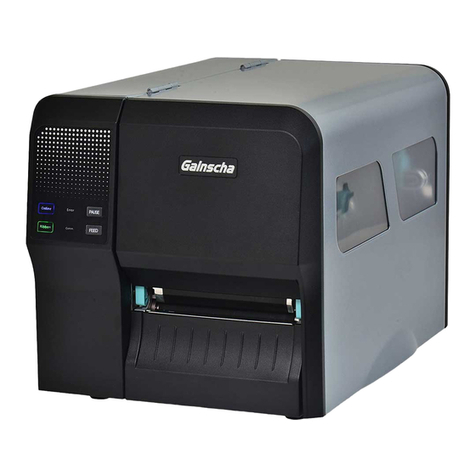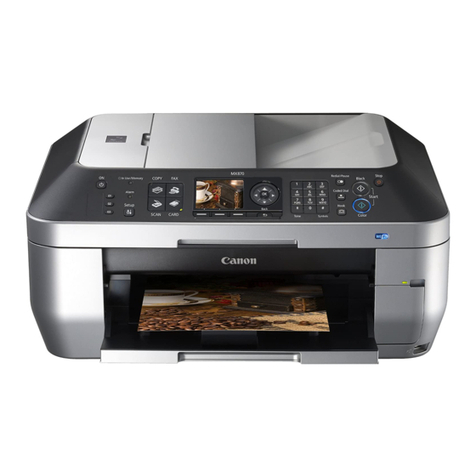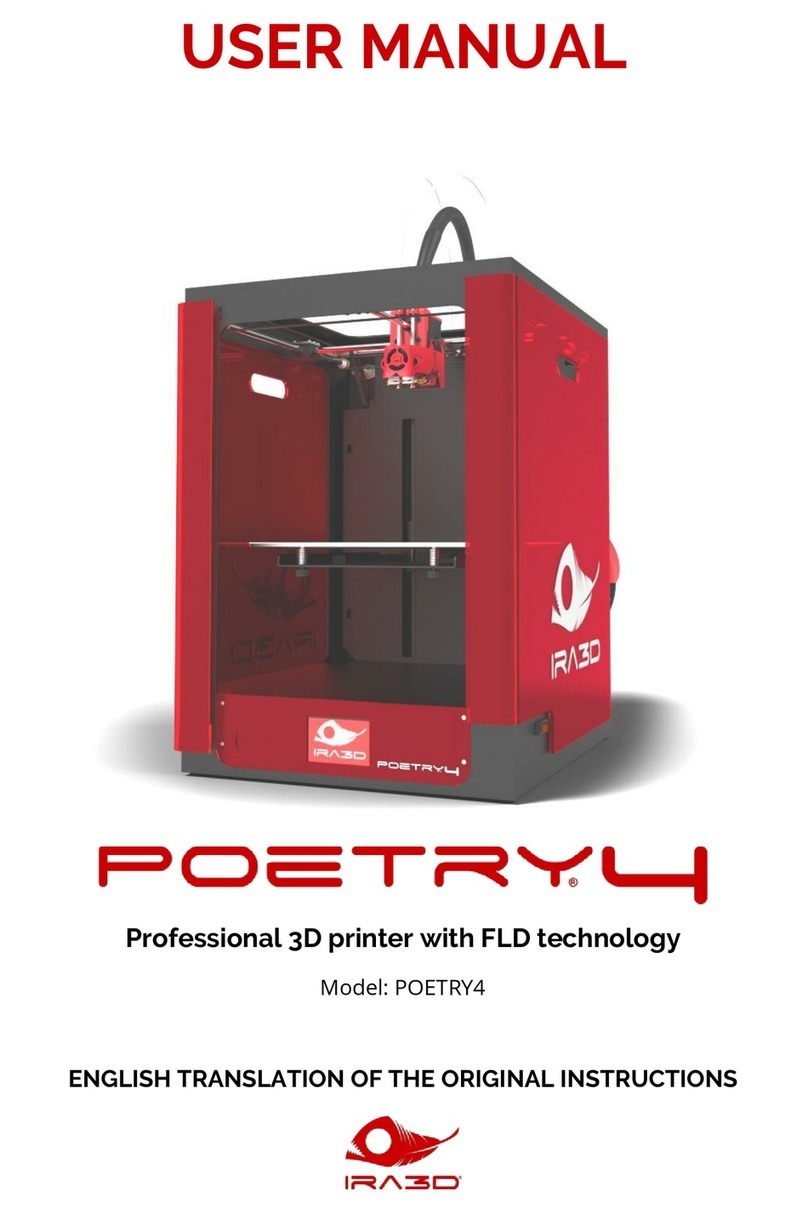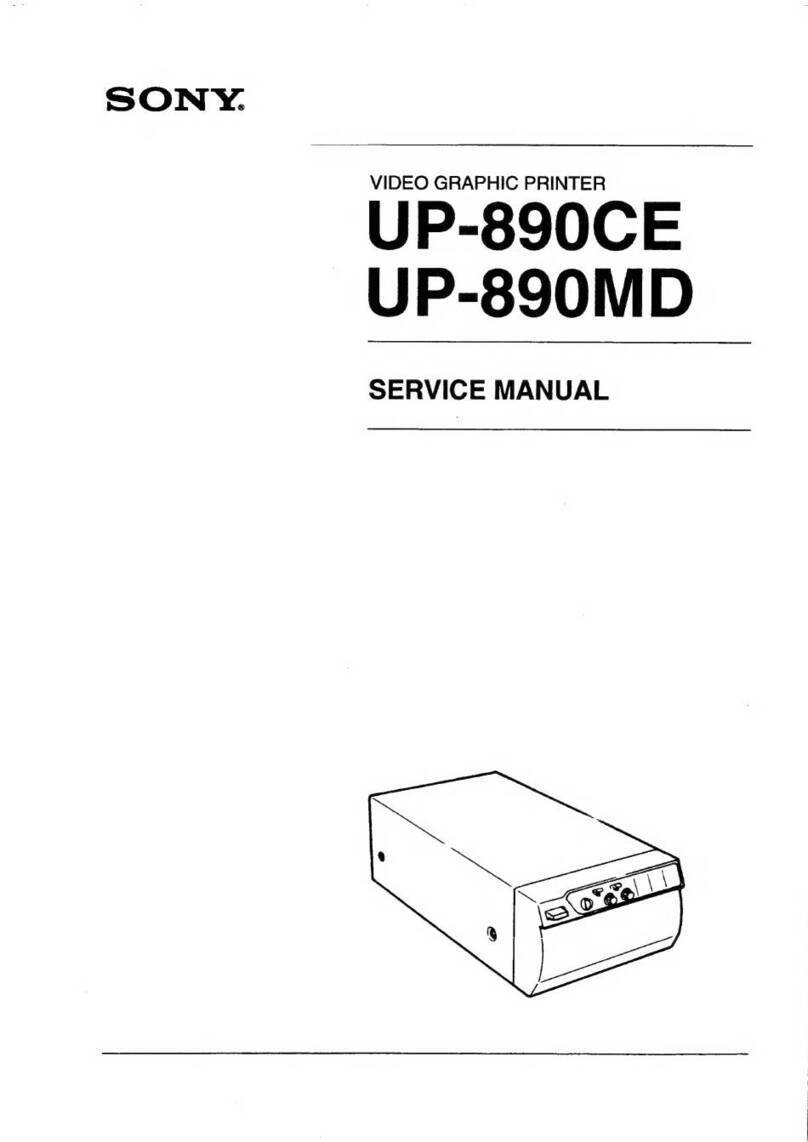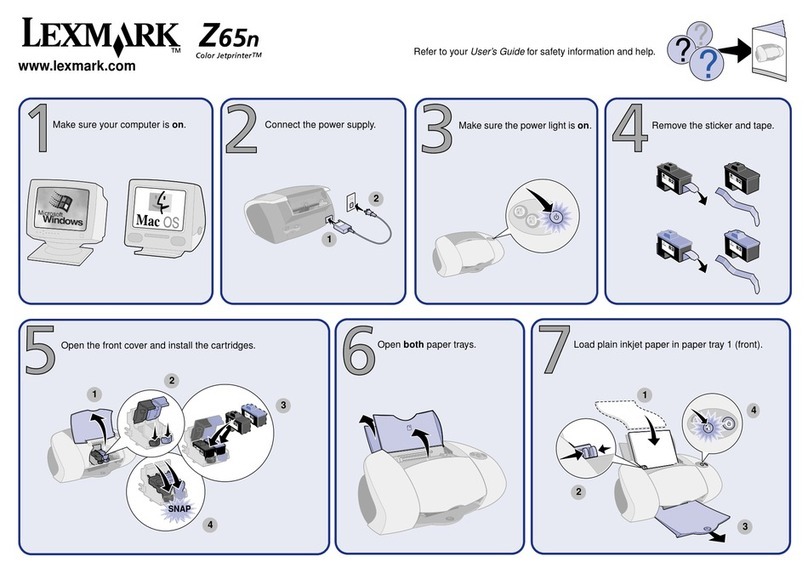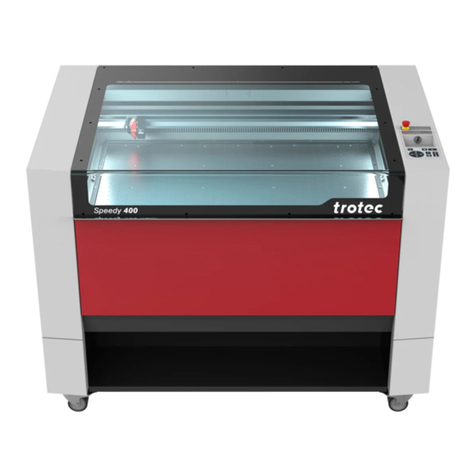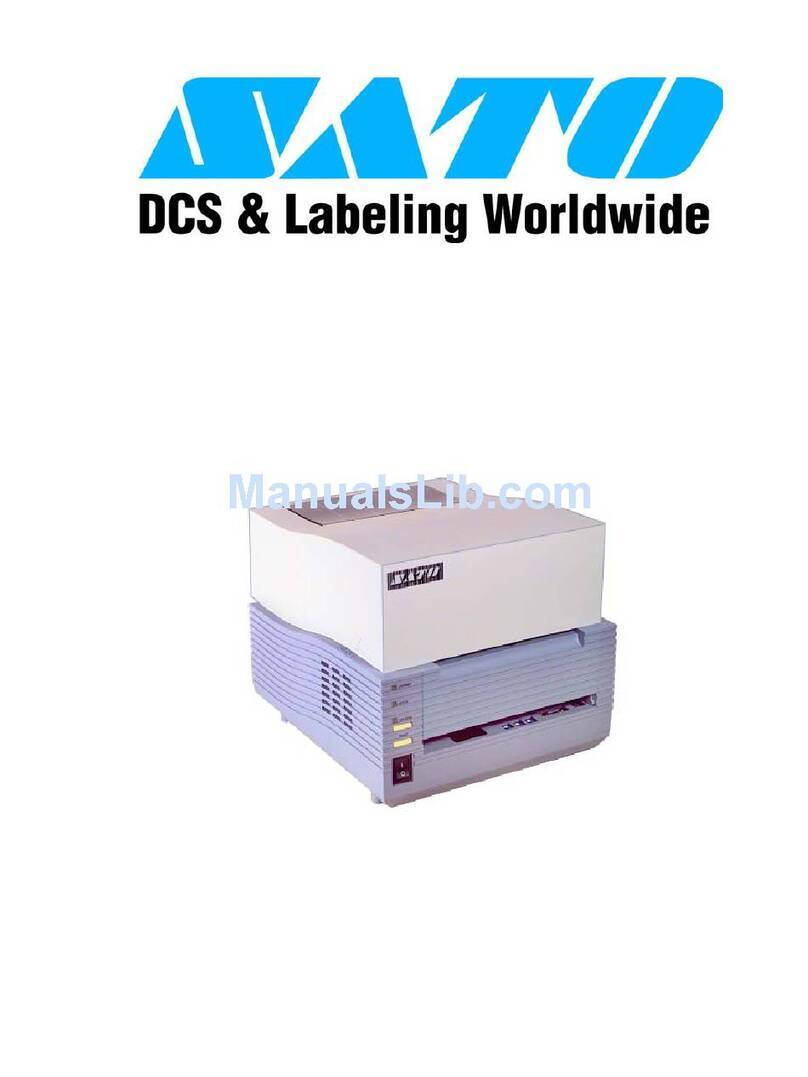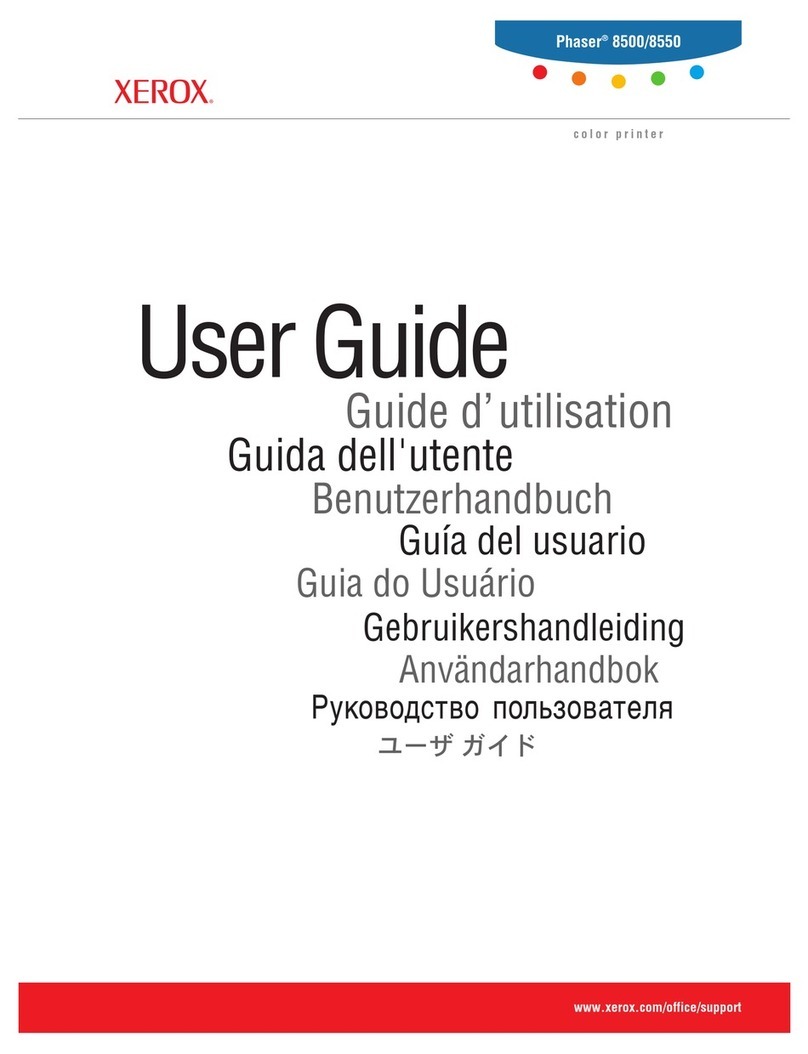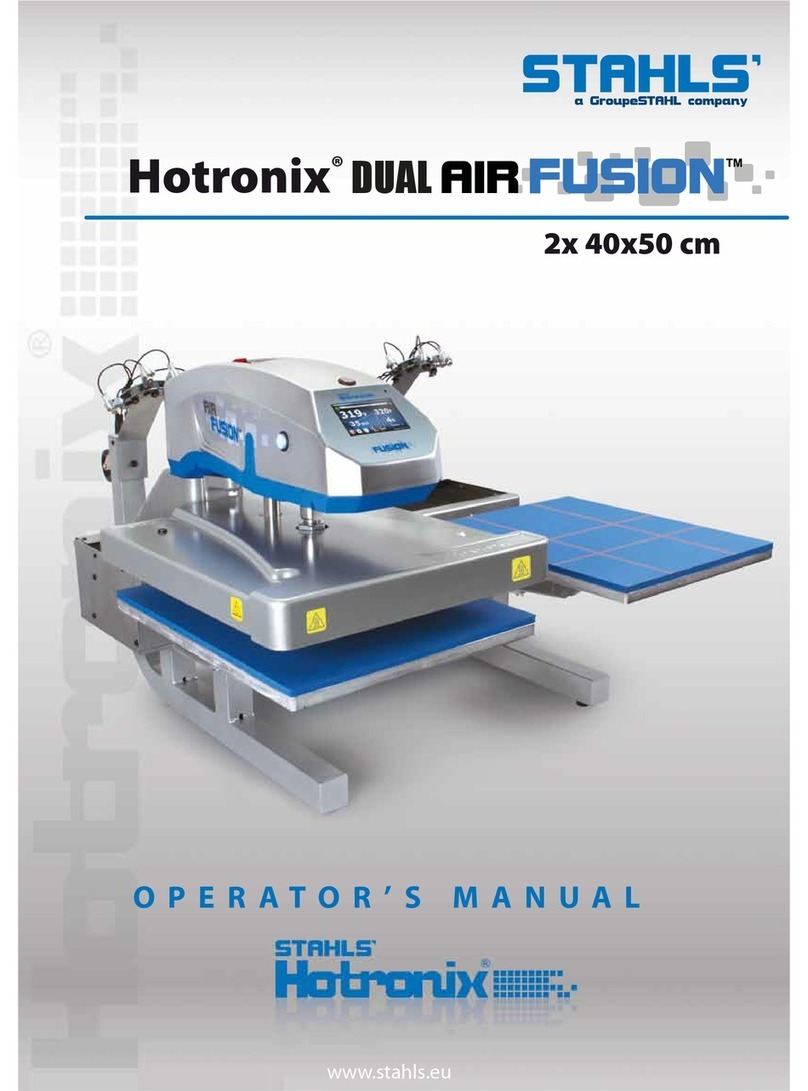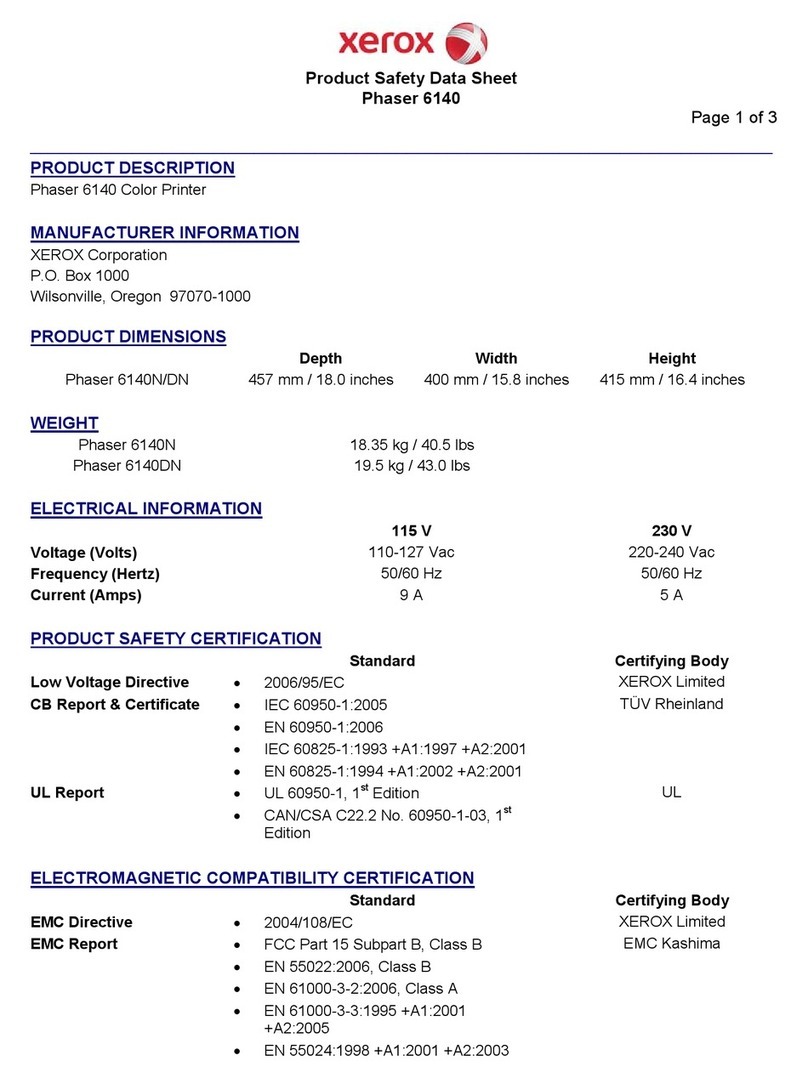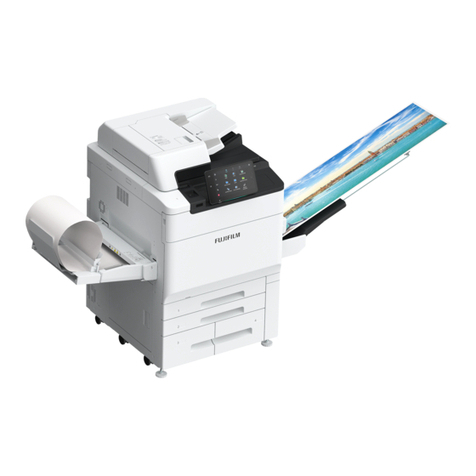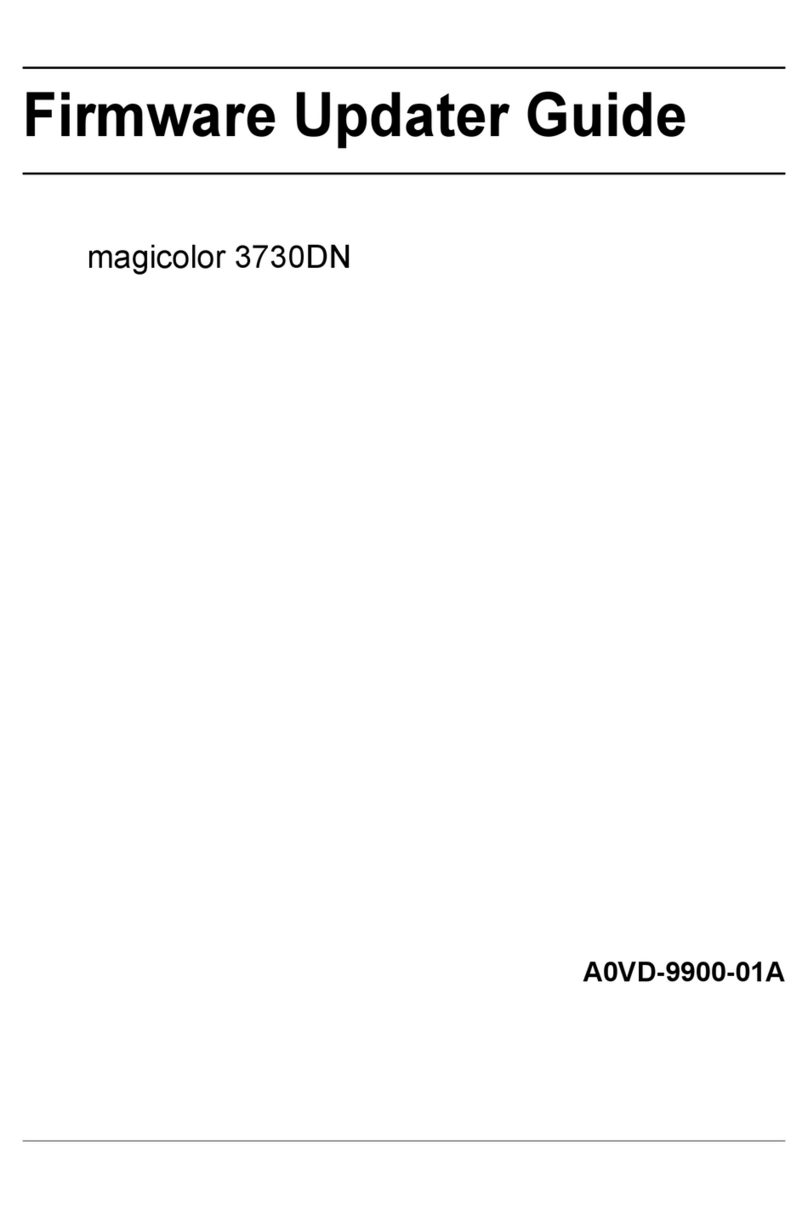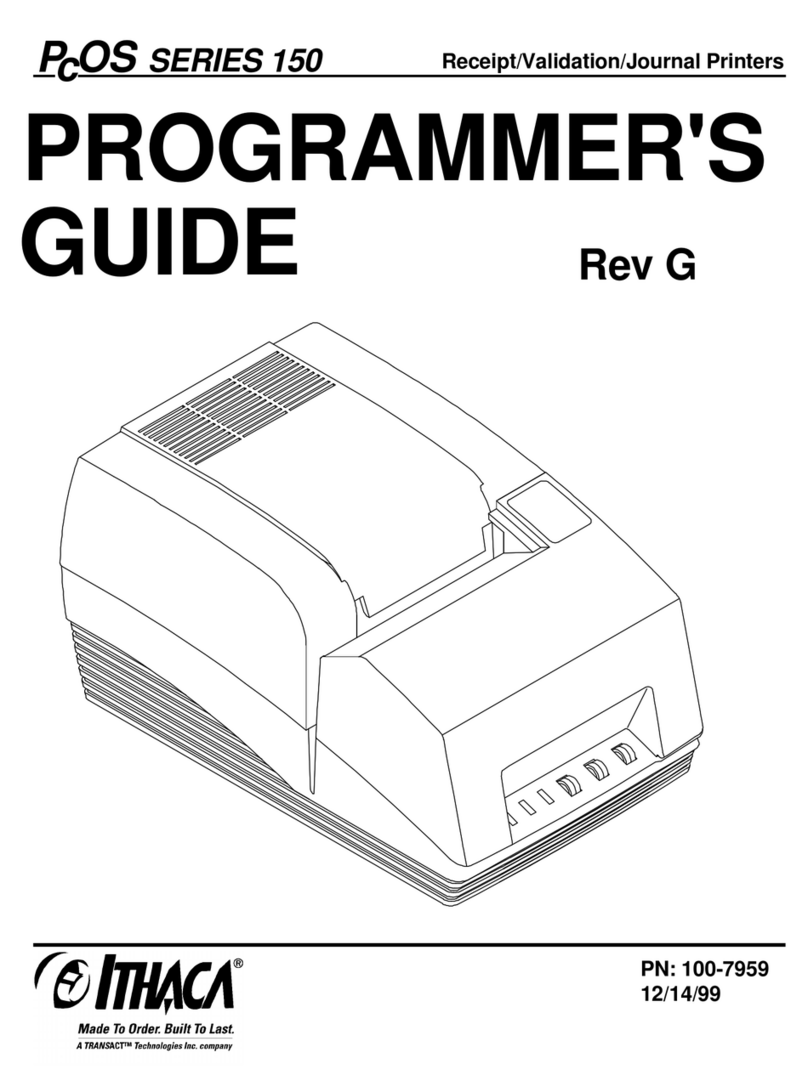Dini Argeo TPR User manual

THERMAL PANEL
PRINTER
TPR
User Manual
TPR_08.10_UK

2
GENERAL INDEX
GENERAL SAFETY INFORMATION..............................................................................page 3
1.PRINTER COMPONENTS ...........................................................................................page 4
2.GENERAL FEATURES ...............................................................................................page 5
3.PRINTER CONNECTIONS ..........................................................................................page 6
3.1 Power supply .....................................................................................................................................page 6
3.2 Self test .................................................................................................................................................page 7
3.3 Printer configuration .......................................................................................................................page 8
3.4 Hexadecimal Dump ........................................................................................................................page 9
3.5 Maintenance ......................................................................................................................................page 9
3.6 Interfaces .......................................................................................................................................... page 11
4. PRINTER FUNCTIONS ............................................................................................page 12
5.TECHNICAL SPECIFICATIONS ...............................................................................page 29
5.1 Printer dimensions ........................................................................................... page 30
5.2 Set of characters............................................................................................... page 31
WARRANTY AND CE CONFORMITY..........................................................................page 32

3
GENERAL SAFETY INFORMATION
-Read and keep the instructions which follow.
- Follow all warnings and instructions indicated on the printer.
- Before cleaning the printer, disconnect the power supply cable.
- Clean the printer with a damp cloth. Do not use liquid or spray products.
- Do not operate the printer near water.
- Pay attention that the external frame, the cover and the printer frame are made from polypropylene, so it’s better to keep
away from:
• ammonia
• hydrocarbon
•methanol
• dichloromethane
• acetone
• perchloretylene
• washing-up liquid
•ethylene
• benzol
• trichlorethylen
• dishwasher liquid
• toluene
Do not use the printer on unstable surfaces that might cause it to fall and be seriously damaged.
Use the type of electrical power supply indicated on the printer label. If in doubt, contact your retailer.
Make sure the printer is placed in such a way as to avoid damage to its wiring.
Make sure that the maximum load absorbed by the printer does not exceed the approved Maximum load by the type of
cable used to supply.
Do not introduce foreign objects of any kind into the printer as this could cause a short circuit or damage parts that could
jeopardize printer functioning.
Do not spill liquids onto the printer.
Do not carry out technical operations on the printer, with the exception of the scheduled maintenance procedures
specifically indicated in the user manual.
Disconnect the printer from the electricity supply and have it repaired by a specialized technician when:
A. The feed connector has been damaged.
B. Liquid has seeped inside the printer.
C. The printer has been exposed to rain or water.
D. The printer is not functioning normally despite the fact that all instructions in the users manual have been followed.
E. The printer has been dropped and its outer casing damaged.
F. Printer performance is poor.
G. The printer is not functioning.

4
1. PRINTER COMPONENTS
A) Front external view
1- Paper mouth
2- Status Led
3- OPEN key ( for paper roll compartment opening )
4- FEED key
5- Paper roll compartment
6- End paper sensor
B) External posterior view
1- Power supply connector
2- Serial interface connector

5
2. GENERAL FEATURES
The printer is supplied by 5 Vdc and is available with serial RS232/TTL interface, parallel Centronics/TTL and paper
sensor.
It’s equipped with a 203 dpi thermal printing mechanism, using 57,5 mm-wide paper rolls.
It can print 24 or 40 characters per line according to the selection made at the setup stage or through a software command;
label printing is not possible.
FEED key. When the FEED key is pressed, the printer advances the paper.
During power-up, if the FEED key is held down, the printer enters the SETUP routine.
OPEN Key. Press the OPEN key to open the paper roll compartment.
The green STATUS led displays printer operating status and this check is performed “on-line”.
Table 1 lists operating statuses and the LED signals connected to them:
Tab.1
LED STATUS
DESCRIPTION
Always off
Printer off
Always on
Printer on–no fault
Slow blinking
Papier Out message
Fast blinking
Recoverable error (head overtemperature,
supply voltage error)

6
3. PRINTER CONNECTIONS
3.1 POWER SUPPLY
The printer is equipped with a 4 pin JS4 male connector (90°) for the power supply. The signals on the connector pins are
as follows:
Model no. type: Header S4B-PH-K-S 90°gradi (JST)
Housing :PHR-4 (JST) o equivalent
TAB.1.1
PIN n°
SIGNAL
NOTE
1
GND
2
GND
3
+VP: from 3.5 Vdc to 8 Vdc
(head voltage)
4
+VC: from 3.5 Vdc to 8 Vdc
(logic supply voltage)
ATTENTION
Respect the polarity of the power supply.

7
3.2 Self test
Printer operating status is indicated in the configuration print-out in which, next to the name of the components displayed
(see fig.1.4), the following information is given:
• under HEAD TEMPERATURE is given the temperature of the head.
• under HEAD VOLTAGE is given the voltage of head.
*PRINTER SETUP*
HEAD TEMPERATURE [°C] = 32.5
HEAD VOLTAGE [V] = 5,0
Baud Rate: 38400 bps
Data length: 8 bits/chr
Parity: None
Handshaking: Xon/Xoff
Autofeed: CR disabled
Columns: 24 col.
Print Mode: Normal
Chars Mode: Normal
Alignment: Disabled
Print Density: 0
[PUSH]ENTER SET-UP
[FASTPUSH]EXIT

8
3.3 Printer Configuration
This printer permits the configuration of default parameters. The printer’s configurable paramenters are:
• Baud Rate: 38400, 19200, 9600, 4800, 2400,1200, 600.
• Data length: 7, 8 bits/car.
• Parity: None, Even or Odd.
• Handshaking: XON/XOFF o Hardware.
• Autofeed: CR disable o CR enabled.
• Columns: 24 col , 40 col. e 42 col.
• Print Mode: Normal or Reverse.
• Char mode: Normal , Double Width (2 x Width), Double height (2 x Height),
Expanded.
• Alignment: Disabled or Enabled.
• Densità di stampa: -2, -1, 0, +1, +2.
General note: The settings made are stored in nonvolatile memory and are loaded automatically. During power-up, if the
FEED key is held down, the printer enters the autotest routine and prints out the setup report. The printer will remain in
standby in Hexadecimal dump mode (see section 1.7) until another key is pressed or characters are received through the
printer communication port. When the FEED key is pressed, the printer enters parameter configuration. Each time the
FEED Key is pressed, the parameter will change and the current value will be printed out.
Once the desired value has been attained, hold the FEED key down for at least a second to pass to the next parameter,
and so on. Printing out of new printer set up report indicates that set up is complete.
3.3.1 CONNECTION SET-UP WITH DFW-DFWK-CPW03-TRS03 3590XX/0X
*PRINTER SETUP *
HEAD TEMP [° C] = 27.5
HEAD VOLT [ V] = 4.6
Baud Rate :9600 bps
Data Length:8 Bits/ chr
Parity: None
Hanshaking:RTS/CTS
Autofeed: CR Enabled
Columns: 24 col.
Print Mode: Reverse
Chars Mode: Normal
Alignment: Disabled
Print Dens. + 1

9
3.4 Hexadecimal dump
This function is used to display the characters received from the communications port, after the reception of each 8
characters from the communications port, the printer prints out both the hexadecimal code received as well as the
corresponding ASCII code.
3.5 Maintenance
•CHANGING THE PAPER ROLL
To change the roll of paper, proceed as follows:
1)Open the printer cover by pressing the OPEN key as shown in fig 1..5;
FIG.1.5

10
2) Position the paper roll making sure it unrolls in the proper direction as shown in the fig. 1.6;
FIG. 1.6
3) Tear off the paper as shown in fig. 1.7 and re-close the cover;
FIG. 1.7

11
4) Tear off the exceeding paper using the jagged edge(see Fig. 1.8).
FIG. 1.8
5) The printer is ready.
3.6 Interfaces

12
3.6.1 SERIAL RS232
The printer with a serial RS232/TTL interface ha a molex 6 –pin male connector 53048 series (90°).
Refer to the table below for the connector pin signals:
PIN
SIGNAL
IN/OUT
DESCRIPTION
1
DTR
OUT
Ready to send
2
TX
OUT
Data transmission
3
RX
IN
Data reception
4
GND
-
Signal ground
5
NC
-
Not connected
6
NC
-
Not connected
3.6.2 CONNECTING PRINTER TO INDICATOR
Below is the connection between the various types of PRINTERS and the indicator:
SERIAL PORTS:
STANDARD TPR CABLE
DFW06
3590M3
GND ( Black )
GND
15 GND
RTS ( Yellow )
CTS
16 RXD
RX ( Grey )
TXD
17 TXD
POWER SUPPLY:
STANDARD TPR CABLE
COLOR
+ 6 Vdc
Red
GND
Black
4. PRINTER FUNCTION
•CONTROL CHARACTERS
The following table contains the list of commands in the order in relation to their hexadecimal value.
LEGEND :
Symbol Function
$ indicates the representation of the command hexadecimal value (for example
$40 means HEX 40).
{ } indicates an ASCII character not performable.
n, m, t, x, yare additionals/optional parameters that can have different values.
The command table lists all the commands for the management of the printer functions.
The commands can be transmitted to the printer at any moment, but they will only be carried
out when the characters previously transmitted have been printed or the commands previously
transmitted have been carried out.
There are no commands with priority status; all the commands are carried out when the circular buffer is free to do so.

13
COMMAND TABLE
Com. HEX
Com. ASCII
Description
Note
$00
Prints in small characters
$01
Prints in double width
$02
Prints in double height
$03
Expanded printing
$04
Restores small character printing
$0A
Forward feeds one line
(n) $0B
Forward feeds (n) line
$0D
Prints line buffer
$OF
Sets CRLF mode
$11
Graphic mode
$1B $23
ESC # n
Transmit printer ID
$1B $40
ESC @
Resets the printer
$1B $41
ESC A
Executes[n] dots line feed
$1B $49
ESC I
Selects 24 columns
(dd) $1B $4D
(dd) ESC M
Writes value (dd) in print mode
$1B $4E
ESC N
Sets normal mode printing
$1B $51
ESC Q
Enables underlining
$1B $52
ESC R
Sets reverse mode printing
$1B $57
ESC W
Prints graphic line of 200 dpi
$1B $61
(dd) ESC a
Selects number of dot spaces
$1B $63
ESC c
Management of bar code printing
$1B $68
ESC h
Selects 42 columns
$1B $69
ESC i
Selects 40 columns
$1B $6D
ESC m
Transmits print mode in serial
$1B $71
ESC q
Disable underlining
$1B $73
ESC s
Transmits next character in serial
$1B $76
ESC v
Transmits printer ID
$1B SFA n1 n2
ESC {} N 1 n2
Prints graphic
$1D $24 n
GS $ n
Set absolute shift into a graphic line
$1D $49 (n)
GS I n
Transmits the printer ID
$1D $55
GS U
Reset printer parameters to default value
$1D $57 (n)
GS W n
Prints n byte of a 200 dpi graphic line
The following pages provide a more detailed description of each command.

14

15

16

17

18

19

20
Table of contents
